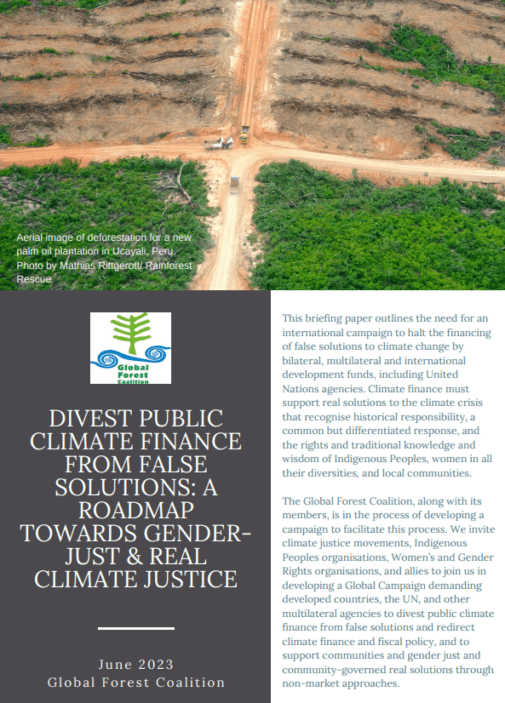What’s at Steak? Impacts of the industrial livestock and feedstock sector on forests, biodiversity, farmers and communities

By Mary Louise Malig, Global Forest Coalition
This piece was originally published by the CBD Alliance for the newsletter, ECO, particularly, ECO Volume 54, Issue 4 Wednesday, 6 Dec. 2016
A new report “What’s at Steak? The real cost of meat” – launched at COP13 – aims to expose the many ways in which industrial livestock farming is impacting our health, lives, forests, biodiversity and the environment, and to argue that – precisely because it does cause so many problems – transforming the industrial livestock sector should be a key objective not only of the UN FAO, but also of the Parties to the Convention on Biological Diversity.
In particular, the CBD needs to assess its Aichi target 7 whose goal is that by 2020, areas under agriculture, aquaculture and forestry are managed sustainably, ensuring conservation of biodiversity.
The report shows global data and concrete examples of impacts on these different areas from the ground in five countries: Bolivia, Brazil, India, Paraguay, Russia.
Key points to highlight are that:
Industrial livestock farming is driving deforestation and contributing to biodiversity loss. In fact, the 2016 State of Worlds Forests report shows that from 1990 to 2005, 71% of deforestation in South America, was driven by demand for pasture.
The report argues that the industrial livestock production (‘factory farming’) model, including Concentrated Animal Feedlot Operations (CAFOs)[5], and large-scale cattle ranching for beef are unsustainable and a leading cause of deforestation.
As early as 2006, the FAO report on Livestock’s Long Shadow, exposed that “the livestock sector may well be the leading player in the reduction of biodiversity, since it is the major driver of deforestation, as well as one of the leading drivers of land degradation, pollution, climate change, overfishing, sedimentation of coastal areas and facilitation of invasions by alien species.”
Industrial livestock farming is responsible for 14.5% greenhouse gas emissions, contributing to climate change. Beef and dairy farming are the worst contributors – with beef at 41% livestock emissions according to the FAO.
The growing corporate concentration in this sector has decimated the small-scale, sustainable farming practiced by small farmers and communities. The report argues that governments are currently supporting these with “perverse incentives.” Again, this is relevant to the CBD as perverse incentives in the form of policy support towards large-scale industrial programs in agriculture, forestry or fisheries that threaten biodiversity. The Strategic Plan of the CBD calls on countries to remove or redirect such perverse incentives before 2020.
The problem is growing. Urbanisation and growing demand in the developing world means that globally we are eating an unsustainable amount of meat.
This CBD meeting is about mainstreaming biodiversity, but this will be futile unless the industrial livestock sector is included in all relevant UN agreements. Global demand for dairy and meat is expected to rise by 70% by 2050. This means more severe impacts on forests, biodiversity and small farmers and communities.
Industrial livestock is a ‘forgotten sector’ when it comes to public awareness about its impact on climate change, but one can just as easily argue that the sector’s devastating impacts on forests and biodiversity, Indigenous Peoples, small-scale farmers, food security, animal welfare and public health are all equally neglected. The industrial livestock sector is getting away with murder, both literally and metaphorically.
The Report calls on governments to support and promote existing alternatives to the factory-farming model including agroecology, agroforestry, and extensive traditional pastoralist practices. Changing over-consumption and over-production models and diets of eating meat at an unsustainable rate is also crucial.
Download the report here.








